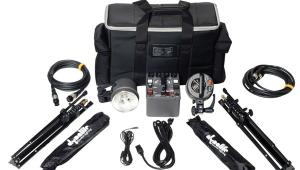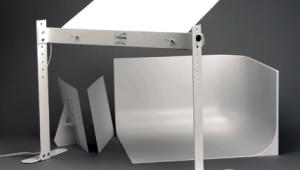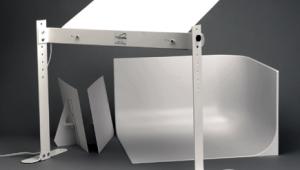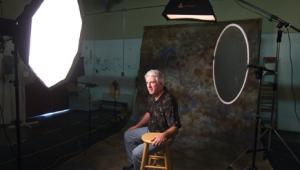Beating Flare
On The Road Or In The Studio
Flare is one of those nagging
photography issues that you always think you have control over, till
it bites you on an important shoot. Flare, more properly referred to
as veiling glare, is the haze that covers all or part of your image
when extraneous light reaches the film. It is much less of a problem
today than in the past. The advent of multi-coating, ingenious internal
baffling and flocking, and computer-designed zoom lenses have almost
totally eliminated flare from common flare-inducing subjects like bright
white objects. Today if you use modern equipment the primary cause of
flare is light shining directly into a lens, reflecting from internal
lens surfaces and causing a bright haze. |
|||
On-camera flash should be a
cinch right? After all, the light source by definition is behind the lens.
But beware, my friends, of the many sources for reflection in the room.
It's the wedding photographer's nightmare--shooting those
"table shots" of all the aunts and uncles one circular table
at a time. Sooner or later you'll get those proofs back from the
lab with the dreaded flash in the mirror flare. Even if your flash isn't
reflected right back into the middle of the frame, a mirror just out of
the frame can still ruin the shot. The solution? Get used to firing your
flash once manually while looking through the viewfinder. You should instantly
get a rough idea if a lot of light is bouncing back. Glass windows, chrome
handrails, and even crystal chandeliers can create the same effect, so
it pays to keep your eyes open. |
|||
The Point-And-Shoot
Problem. If you're like me, you bring an inexpensive point-and-shoot
camera with you when you're not carrying your bigger gear. For most
happy snaps these cameras do a remarkably good job, but their lenses,
especially those with long-range zooms, just don't have the same
level of internal reflection control as pricier SLR lenses. I have been
guilty of trying to get too cute with my fancy little point-and-shoot
camera. I shoot into sunsets, backlight my subjects, and try to use the
ambient light to my advantage. More often than not some of my shots have
bright orange flare along one side of the image. It's tough to try
and scrim the lens on a point-and-shoot, since the viewfinders are usually
not too accurate. I still try and hold my hand up and block the sunlight,
since these cameras are easy enough to shoot one handed. |



















































